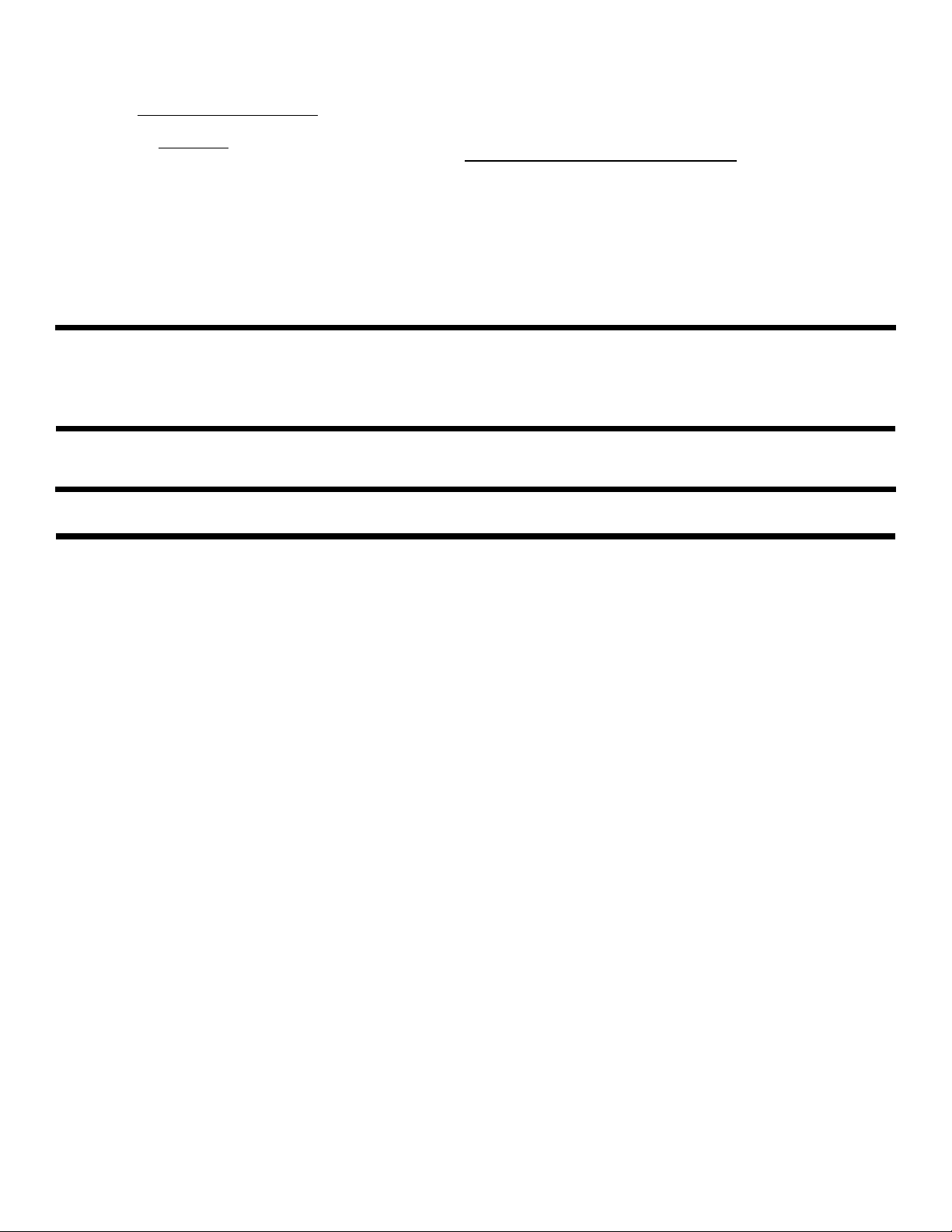
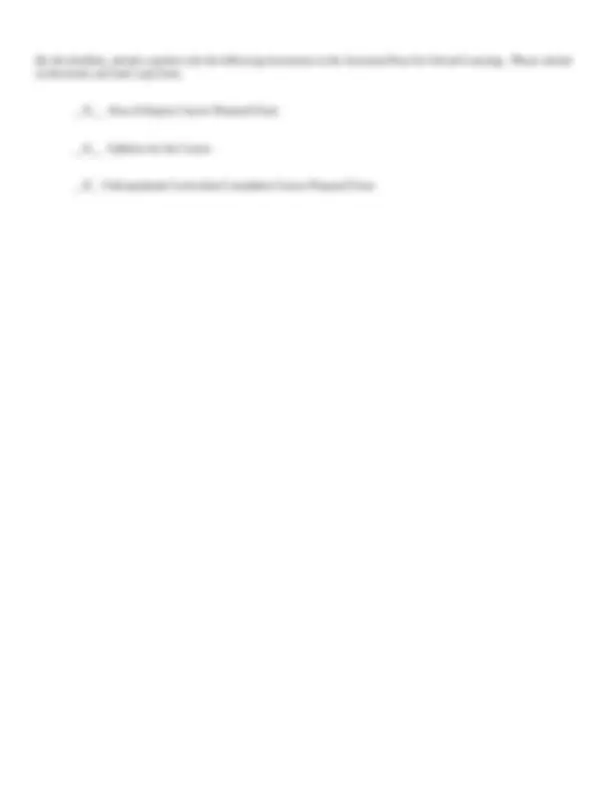
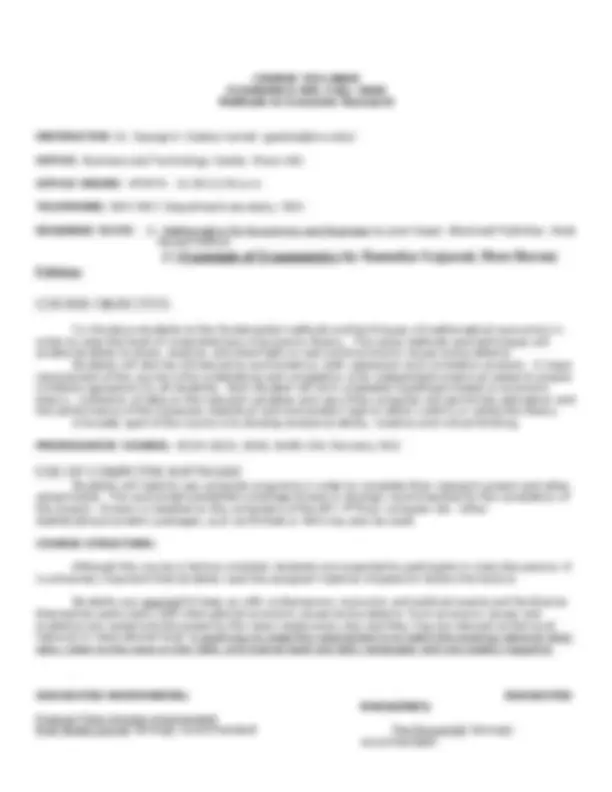
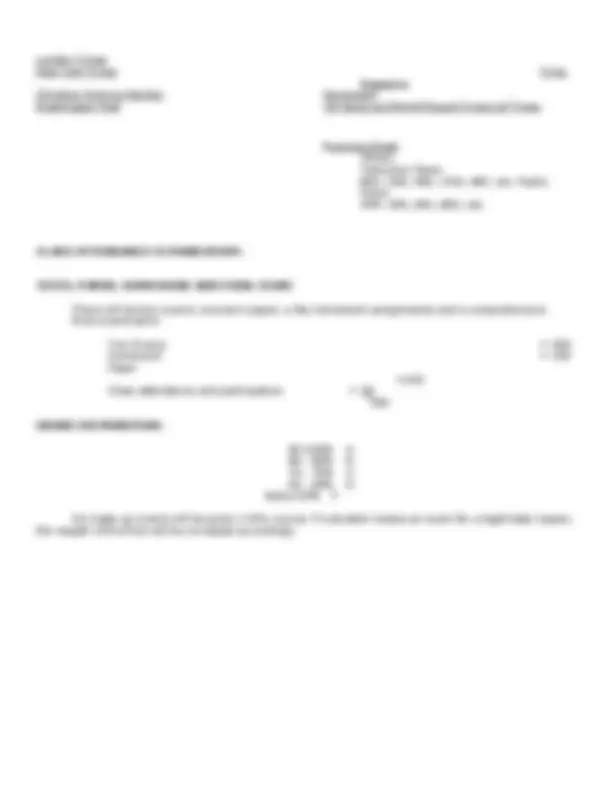
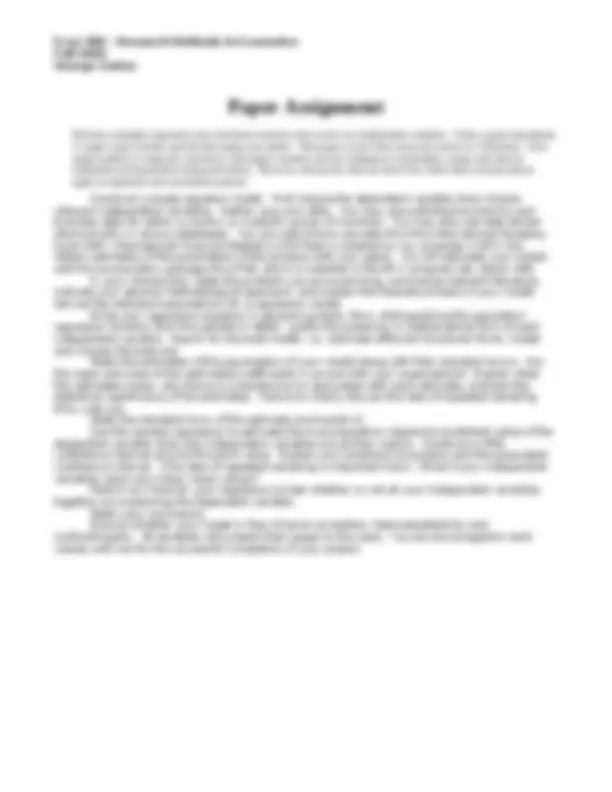


Study with the several resources on Docsity

Earn points by helping other students or get them with a premium plan


Prepare for your exams
Study with the several resources on Docsity

Earn points to download
Earn points by helping other students or get them with a premium plan
Community
Ask the community for help and clear up your study doubts
Discover the best universities in your country according to Docsity users
Free resources
Download our free guides on studying techniques, anxiety management strategies, and thesis advice from Docsity tutors
A proposal for the course 'methods in economic research' (econ 485) in the management and economics department. The course aims to provide students with the necessary tools to undertake applied research, focusing on both formal and informal methods of reasoning and econometrics. Students will be expected to complete an independent empirical research project and will be introduced to mathematical economics and econometrics. The course objectives will be accomplished through class discussions, teamwork, writing analytical papers, and oral presentations.
Typology: Exams
1 / 8

This page cannot be seen from the preview
Don't miss anything!





Department Management and Economics Course Number ECON 485 Course Name: Methods in Economic Research This form must be submitted to the Faculty Council on Liberal Learning and Academic Life as part of the submission process. Please attach a proposed syllabus for this course and the Undergraduate Curriculum Course Proposal Form. DEADLINE FOR PROPOSALS: 17 December 2004 Please answer the following questions:
AREAS OF INQUIRY INFORMAL AND FORMAL REASONING
Methods in Economic Research INSTRUCTOR : Dr. George K. Zestos {email: gzestos@cnu.edu) OFFICE : Business and Technology Center, Room 421 OFFICE HOURS : MTWTh: 11:00-11:50 a.m. TELEPHONE: 594-7067; Department secretary: 594- REQUIRED TEXTS : 1) Mathematics for Economics and Business by Jean Soper, Blackwell Publisher, Most Recent Edition 2 ) Essentials of Econometrics by Damodar Gujarati, Most Recent Edition COURSE OBJECTIVE: To introduce students to the fundamental methods and techniques of mathematical economics in order to raise the level of comprehension of economic theory. The same methods and techniques will enable students to study, analyze, and shed light on real world economic issues and problems. Students will also be introduced to econometrics, both regression and correlation analysis. A major requirement of the course is the undertaking and completion of an independent empirical research project (multiple regression) by all students. Each student will form a testable hypothesis based on economic theory. Collection of data on the relevant variables and use of the computer will permit the estimation and the performance of the necessary statistical and econometric test to either confirm or refute the theory. A broader goal of the course is to develop analytical ability, creative and critical thinking. PREREQUISITE COURSE: ECON 201G, 202G, BUSN 231 (formerly 331) USE OF COMPUTER SOFTWARE Students will need to use computer programs in order to complete their research project and other assignments. The econometrics/statistics package Eviews is strongly recommended for the completion of the project. Eviews is installed on the computers of the BTC 4th^ floor computer lab. Other statistical/econometric packages, such as Minitab or SAS may also be used. COURSE STRUCTURE: Although the course is lecture oriented, students are expected to participate in class discussions. It is extremely important that students read the assigned material (chapter(s)) before the lecture. Students are required to keep up with contemporary economic and political events and familiarize themselves particularly with international economic issues and problems. Such economic issues and problems are raised and discussed by the news media every day and they may be relevant at the local, national or international level. A good way to meet this requirement is to watch the evening national news daily, listen to the news on the radio, and read at least one daily newspaper and one weekly magazine. . SUGGESTED NEWSPAPERS: SUGGESTED MAGAZINES: Financial Times (strongly recommended) Wall Street Journal (strongly recommended) The Economist (strongly recommended)
London Times New York Times Time Magazine Christian Science Monitor Newsweek Washington Post US News and World Report Financial Times Business Week Others Television News: BBC, CBS, NBC, CNN, ABC, etc. Radio News: NPR, CBS, ABC, BBC, etc. CLASS ATTENDANCE IS MANDATORY. TESTS, PAPER, HOMEWORK AND FINAL EXAM : There will be two exams, one term paper, a few homework assignments and a comprehensive final examination Two Exams = 200 Homework = 100 Paper = Class attendance and participation = 50 550 GRADE DISTRIBUTION: 90-100% A 80- 89% B 70- 79% C 60- 69% D below 60% F No make up exams will be given in this course. If a student misses an exam for a legitimate reason, the weight of the final will be increased accordingly.
Chapter 1 Functions in Economics Chapter 2 Equations in Economics Chapter 4 Changes, rates, finance and series Chapter 5 Differentiation in Economics Chapter 6 Maximum and Minimum Values Chapter 7 Further Roles of Differentiation Chapter 8 Partial Differentiation in Economics Chapter 9 Trade and the Balance of Payments EXAM 1 Chapter 1 The Nature and Scope of Econometrics Chapter 2-4 Review of Basic Probability and Statistics Chapter 5-6 Simple Regression Chapter 7 Multiple Regression Chapter 8 Functional Forms Chapter 9 Dummy Explanatory Variable Chapter 10 Multicollinearity Chapter 11 Heteroscelasticity Exam 2 The research project will be due the day of the final for this class according to the University schedule.
Econ 380 – Research Methods in Economics Fall 2005 George Zestos
Perform a multiple regression and correlation analysis with at least two independent variables. Write a paper (maximum 12 pages typed, double-spaced) discussing your model. This paper is your final exam and counts for 150 points. Your target audience is someone who knows descriptive statistics and the rudiments of probability, along with interval estimation and hypothesis testing procedures. However, this person does not know how these ideas and procedures apply to regression and correlation analysis. Construct a single equation model. First choose the dependent variable, then choose relevant independent variables. Gather your own data. You may use published economics and business data for either a country or a specific group of countries. You may also use data stored electronically in various databases. You are welcome to use data from the International Monetary Fund (IMF), International Financial Statistics (IFS) that is installed on my computer in BTC 421. Obtain estimates of the parameters of the printout with your paper. You will estimate your model with the econometric package MicroTSB, which is installed in the BTC computer lab, Admin 308. In your introduction, state the problem you are examining, summarize relevant literature, indicate your general methodological approach, and explain the theoretical basis of your model. Set out the standard assumptions for a regression model. Write your regression equation in general symbolic form, distinguishing the population regression function from the sample in detail. Justify the presence in mathematical form of each independent variable. Search for the best model, i.e., estimate different functional forms, model and choose the best one. State the estimates of the parameters of your model along with their standard errors. Are the signs and sizes of the estimated coefficients in accord with your expectations? Explain what the estimates mean, why there is a standard error associated with each estimate, and test the statistical significance of the estimates. Failure to clearly discuss the idea of repeated sampling WILL cost you. State the standard error of the estimate and explain it. Use the sample regression to estimate the true population regression predicted value of the dependent variable when the independent variables are at their means. Construct a 95% confidence interval around this point value. Explain your prediction procedure and the associated confidence interval. (The idea of repeated sampling is important here.) What if your independent variables were not in their mean values? Peform an F test for your regression to test whether or not all your independent variables together are explaining the dependent variable. State your conclusions. Discuss whether your model is free of serial correlation, heteroskedasticity and multicollinearty. All students will present their paper to the class. You are encouraged to work closely with me for the successful completion of your project.